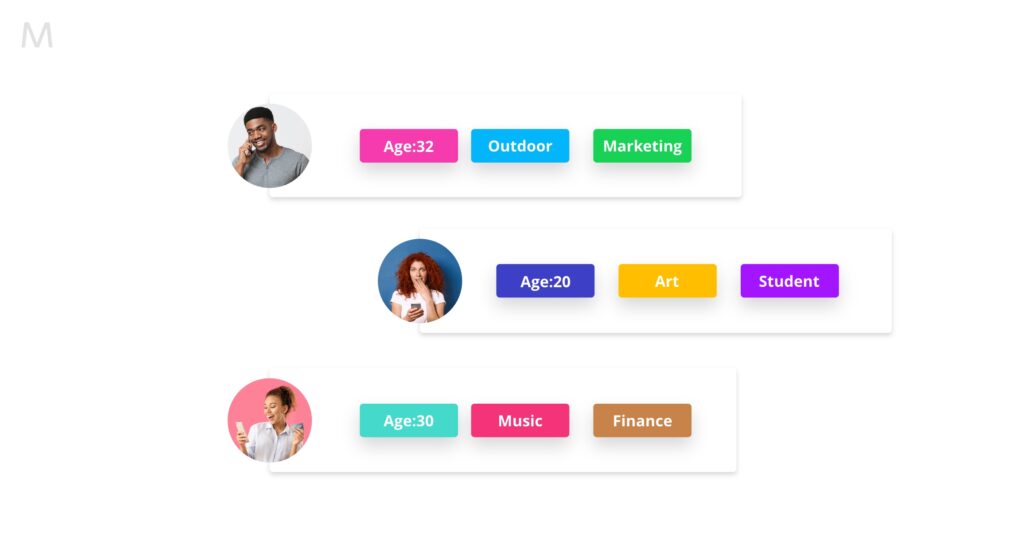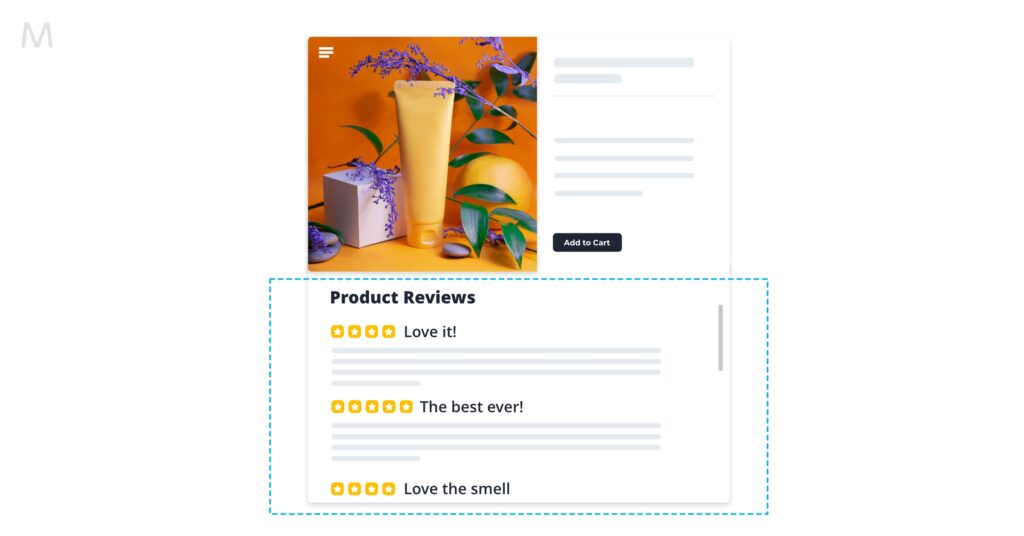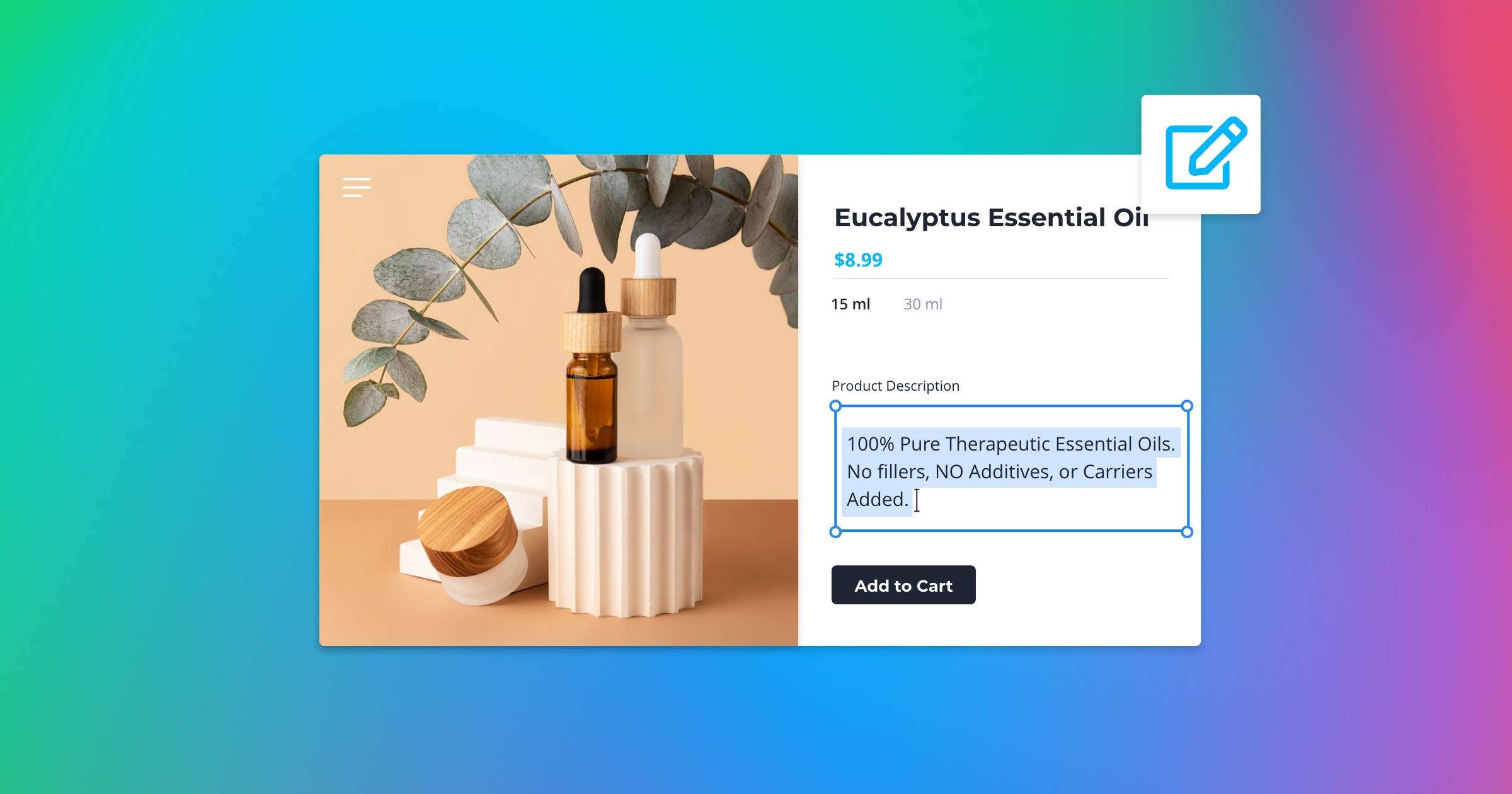Ecommerce has been growing in popularity for a while now, and events of the last few years have pushed even more of us toward buying online. The one principal difference between selling from a website and selling from a bricks-and-mortar store is that customers can’t feel or experience products before they purchase.
That puts the onus on sellers to give a virtual impression of the items they sell. A lot of the responsibility for that falls to the humble product description — that short write-up describing and selling any item you include on your ecommerce site.
A product description tells the reader what a product is and why they should buy it. A common mistake is to only do the former, but this is the perfect opportunity to advertise your goods, so make the description sing with appeal!
The tips below will help you explain the true value and benefits of your products. By including these tips in your sales training guide, you can make sure all staff are on the same page and any new recruits are quickly brought up to speed.
How to create product descriptions that sell
Of course, this is easier said than done. You might have a lot of passion for your merchandise, but how do you convey that through a snappy description? And where do you start with the writing process?
Here’s a step-by-step checklist that you can follow to help spark an idea and create an ultimate sales copy.
1. Think of your target market
This is the vital first step. By focusing on your key audience, you’ll have a better idea of what to say. Trying to appeal to everyone will make your message look bland and you end up speaking to no one. Hone in on your ideal buyer. Visualize them and think of what language they use.

For example, if you sell furniture, are your customers interior decorators or young families? Will your audience appreciate specific vocabulary on home décor or would they prefer plain-talking descriptions of product materials and washability? When you’ve developed a real sense of who this person is, create your description just for them. This personalization will forge a connection.
2. Use natural language
Don’t be overly formal. Imagine you’re having a chat with the buyer over a coffee. Being too wordy will just put them off. You want the product description to read like a recommendation from a friend. Use anecdotes: Don’t you just hate it when…? Wouldn’t it be great if…? Put some of your own personality into the description. Your words come from a human, not a computer.
Even if you sell something technical, you should still describe them in a way that feels friendly and chatty. Always try to appeal to your buyer on a personal level.
3. Explain how your product solves a problem
You want to demonstrate how buying your product will make the reader’s life easier, so show the benefits of using it! Remember – you’re chatting with a friend and want to share your experience of a great new item you’ve just bought.
People like to learn tips that make their lives easier. Give them exactly what they need! Act like you’re doing them a favor. Turning a product description into a solution to a problem will make the customer feel like their purchase is an achievement. For example, the jacket you sell is not just a fancy addition to their wardrobe, it’s also what they can wear to their cousin’s wedding.
4. Be creative with your descriptions
Originality will stick in the reader’s mind. Use it in abundance. If you employ generic descriptions like “superior quality” or “great value”, the reader will switch off. They’ve heard it all before. Make them sit up and take notice with a few choice phrases.
Combine the technical aspects with the aesthetics – this fusion will be both informative and pleasing to read. For example, the inner lining of the jacket you sell both adds a splash of color to an outfit and makes it comfortable to wear for extended periods of time (like at that wedding).
5. Help your readers visualize
Set the scene and let your reader’s imagination take over. Descriptive words will lay the groundwork for their interaction with the product. And crafting a story will help the reader visualise the situation more clearly.
“After a hard day at work, snuggle up on the sofa with this comfy cushion”. Encourage them to imagine the ways they can incorporate the product into their life and be happier for it.
6. Make it easy to skim read
None of this should feel like an effort for the reader. Think of those who won’t spend any more than a few seconds scanning over the page. Make it short, sharp, and clearly formatted. Use bullet points and different colors. This way, if people enter the webpage just to skim read, they can do it with ease.
An amazing 79% of readers always scan a new page they enter rather than reading it word-for-word. You can make descriptive words jump out at them by keeping sentences short and using color contrast between sections.
7. Include keywords for SEO (search engine optimization)
Keywords are topics that define your content which people type into search engines when they’re browsing for products online. Learning a bit about SEO marketing will make all the difference to your sales.
One important point is this: by using an SEO tool for keyword research, you will help bump your description to the top of search engine pages.
8. Use great images
If the reader can see the item, they’ll know what it will be like to own it. But that’s not all. Use your images to encourage your reader to visualize how it’ll look in their house. It’s very important to have high quality images. Also, one of the best practices is finding a certain distance and angle that shows the product fully and makes the viewer feel like it’s right in front of them.

Show the product in action, displaying its capabilities. Video could be great here (but make sure it doesn’t slow down your site). GIFs are great too! And AR and VR offer many new ways of showcasing your physical products. Most readers focus on images more than the description itself. They’re the clincher that decides the sale, so give them the importance they deserve.
9. Add product reviews
If people have bought the item before and have been impressed by it, let it be known! Quoting former buyers will just strengthen your argument. Make sure the reviews are real, honest, short, and recent. But steer clear of reviews that are too excessive as they may appear sarcastic. Choose ones that are rational and to the point.

When people read about others who are happy with your product, they will follow suit in buying it. Put yourself in the customer’s shoes and think about what you’d want to read if you were in their place.
Always remain consistent
These nine steps will set you on the path to being customer-focused and align your way of thinking with their needs. Consistency across the board, though, is key. It’s no good for you to keep this advice to yourself or to apply it to the next few descriptions you craft and then revert back to poor quality, copy-pasted descriptions from next week.
Encourage everyone in your organization to adopt these product description tips as a standard from now on. You could even arrange a quick all-hands meeting to convey the importance of the tips to all your team members. There are plenty of free conference call services that make it simple to run such meetings remotely.
Once everyone is up to speed, the high quality of your product descriptions will lead to a surge in sales. Not just for one or two product lines or for a few weeks, but across the board and for the long-term.
Need to chat about your mobile marketing strategy?
More than 10,000 marketers use Maropost to engage with their prospects and customers through emails, SMS, social media and more. We’re here to help you grow your business!
Chat Now


